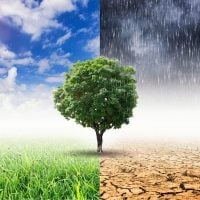Wildlife conservation is a critical endeavor that seeks to protect the planet’s biodiversity and ensure the survival of various species. As habitats are increasingly threatened by human activities, climate change, and pollution, the need for effective conservation strategies has never been more urgent. Wildlife conservation grants play a pivotal role in funding projects that aim to preserve ecosystems, rehabilitate endangered species, and promote sustainable practices.
These grants can come from various sources, including government agencies, non-profit organizations, corporations, and international bodies, each with its own set of criteria and application processes. For non-governmental organizations (NGOs) and community groups dedicated to wildlife conservation, securing funding is essential for the success of their initiatives. Grants provide the necessary financial support to conduct research, implement conservation programs, and raise public awareness about the importance of protecting wildlife.
Understanding the different types of grants available and how to navigate the application process can significantly enhance an organization’s ability to secure funding and make a meaningful impact in the field of wildlife conservation.
Government Grants for Wildlife Conservation
Government grants are a primary source of funding for wildlife conservation efforts. Various federal, state, and local agencies allocate funds specifically for projects aimed at preserving wildlife and their habitats. In the United States, for instance, the U.S.
Fish and Wildlife Service (USFWS) offers several grant programs designed to support conservation initiatives. The Wildlife Restoration Program and the Endangered Species Program are two notable examples that provide financial assistance to states and organizations working on wildlife management and recovery efforts. Applying for government grants often involves a rigorous process that requires detailed project proposals, budgets, and timelines.
Organizations must demonstrate their capacity to manage funds effectively and achieve measurable outcomes. Additionally, many government grants prioritize projects that involve collaboration with local communities or other stakeholders, emphasizing the importance of partnerships in successful conservation efforts. By leveraging government funding, NGOs can enhance their projects’ scope and sustainability while contributing to broader national and international conservation goals.
Non-Profit Organization Grants for Wildlife Conservation
In addition to government funding, numerous non-profit organizations offer grants specifically for wildlife conservation projects. These grants are often designed to support innovative approaches to conservation, research initiatives, and community engagement efforts. Organizations such as the World Wildlife Fund (WWF), the National Geographic Society, and the Wildlife Conservation Society provide financial assistance to projects that align with their missions of protecting wildlife and habitats.
Non-profit grants can vary significantly in terms of eligibility criteria, funding amounts, and application processes. Some organizations may focus on specific regions or species, while others may prioritize projects that address particular environmental issues. For example, the Disney Conservation Fund supports projects that promote wildlife protection and habitat preservation worldwide.
NGOs seeking non-profit grants should carefully review each organization’s guidelines and tailor their proposals to align with the funder’s priorities. Building relationships with grant-making organizations can also enhance an NGO’s chances of securing funding.
Corporate Grants for Wildlife Conservation
Corporate grants represent another valuable source of funding for wildlife conservation initiatives. Many companies recognize their corporate social responsibility (CSR) and actively seek opportunities to support environmental causes. Corporations may offer grants through their foundations or as part of their CSR programs, focusing on projects that align with their business values or sustainability goals.
For instance, companies like Coca-Cola and Microsoft have established grant programs that support conservation efforts globally. When applying for corporate grants, NGOs should emphasize how their projects align with the company’s mission or values. Demonstrating a clear connection between the proposed project and the corporation’s CSR objectives can significantly enhance an organization’s chances of receiving funding.
Additionally, corporate partnerships can provide NGOs with access to resources beyond financial support, such as employee volunteers or in-kind donations. By fostering mutually beneficial relationships with corporations, NGOs can amplify their impact on wildlife conservation.
International Grants for Wildlife Conservation
International grants are crucial for wildlife conservation efforts that transcend national borders. Many global organizations and foundations provide funding for projects aimed at protecting endangered species and preserving ecosystems worldwide. The Global Environment Facility (GEF) and the United Nations Development Programme (UNDP) are two prominent examples of international bodies that offer grants for conservation initiatives.
These grants often focus on large-scale projects that address pressing environmental challenges on a global scale. For instance, initiatives aimed at combating climate change or protecting biodiversity hotspots may receive funding from international sources. NGOs seeking international grants should be prepared to collaborate with partners from different countries and demonstrate how their projects contribute to global conservation goals.
Additionally, understanding the complexities of international funding mechanisms is essential for successfully navigating this landscape.
How to Apply for Wildlife Conservation Grants
Research and Identification of Funding Sources
The first step in securing wildlife conservation grants is to identify potential funding sources that align with your organization’s mission and project goals. Conducting thorough research on available grants is essential, as many grant-making organizations provide detailed information about their priorities, eligibility criteria, and application processes on their websites.
Crafting a Compelling Project Proposal
Once potential grants have been identified, organizations should develop a well-structured project proposal that clearly outlines the objectives, methodologies, expected outcomes, and budget. The proposal should also include a timeline for project implementation and a plan for evaluating success. It is crucial to articulate how the proposed project addresses specific conservation challenges and contributes to broader environmental goals.
Follow-up Communication and Building Relationships
In addition to crafting a strong proposal, NGOs should be prepared to engage in follow-up communication with grant-making organizations. Building relationships with funders can enhance an organization’s credibility and increase its chances of securing future funding. After submitting an application, organizations should remain proactive by seeking feedback on their proposals and demonstrating a commitment to transparency and accountability in managing grant funds.
By understanding the various sources of funding available and adopting a strategic approach, NGOs can position themselves to secure financial support for their projects and make significant strides in wildlife conservation efforts that benefit both local communities and global ecosystems alike.








































